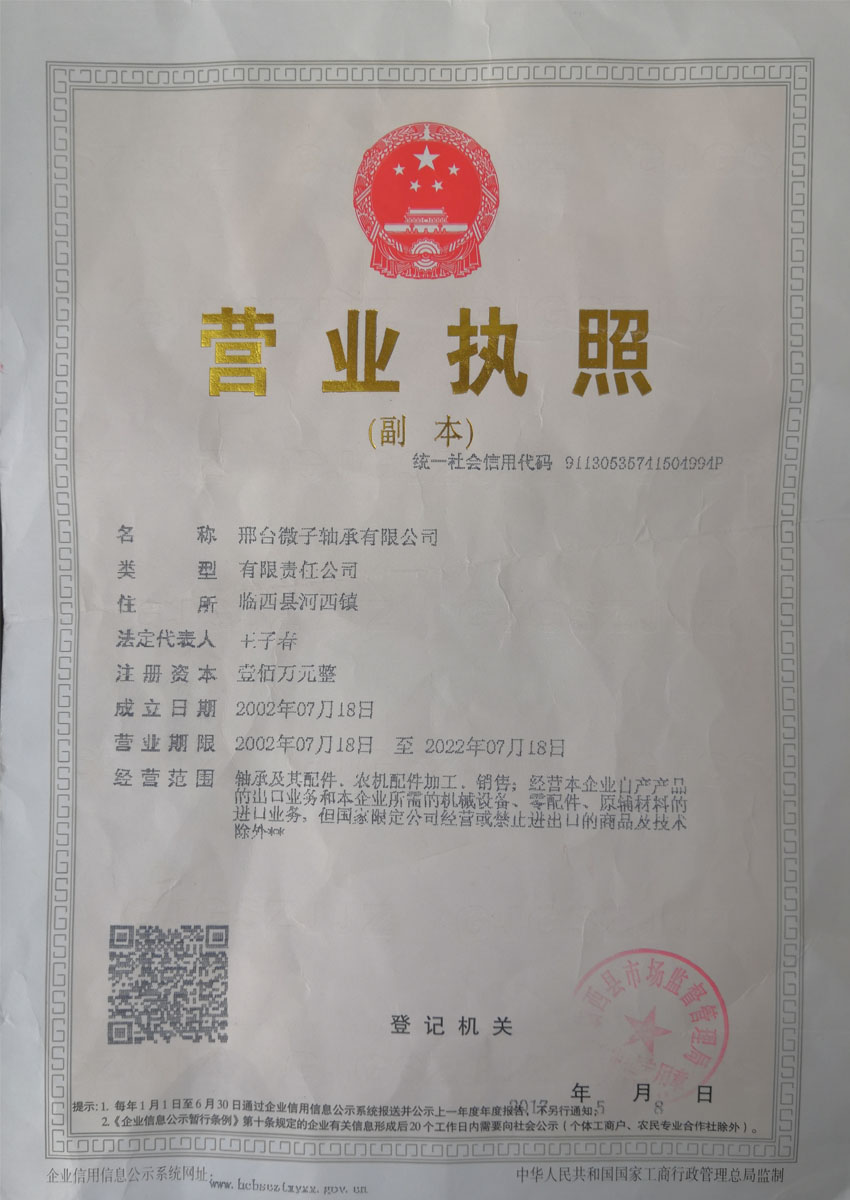
10 月 . 12, 2024 08:40 Back to list
Angular Contact Bearings Compared to Deep Groove Bearings for Optimal Performance Applications
Angular Contact Ball Bearings vs. Deep Groove Ball Bearings A Comprehensive Comparison
When it comes to bearing selection in mechanical applications, two types often come to the forefront angular contact ball bearings and deep groove ball bearings. Each type has unique characteristics that make them suitable for different uses. This article will delve into their structures, applications, advantages, and limitations to help you understand when to choose one over the other.
Structure and Design
Angular contact ball bearings are designed with races that are angled relative to the bearing axis. This unique angle allows them to support both axial and radial loads simultaneously. The separation of loads is achieved due to the contact angle, which can vary depending on the specific application; common angles are 15°, 25°, and 40°. The greater the angle, the more axial load capacity the bearing can handle, making angular contact bearings particularly versatile.
On the other hand, deep groove ball bearings feature a straightforward design with deep raceways that allow them to accommodate radial loads and, to a limited extent, axial loads in both directions. They are simpler in construction and typically require less maintenance compared to their angular counterparts, which can be more complex due to their specific load handling capabilities.
Performance Under Load
When comparing performance, angular contact ball bearings excel in applications where combined loads (i.e., radial and axial) are prevalent. Thanks to their design, they can handle higher speeds and loads without the risk of failure. Their ability to manage axial loads effectively makes them ideal for spindle applications in machinery, including CNC machines and electric motors.
Deep groove ball bearings, while effective for standard applications, are generally limited to lighter axial loads. Their design permits rotation at high speeds and provides low friction, making them a common choice for electric motors, appliances, and automotive applications where radial loads are predominant.
Applications
The choice between angular contact and deep groove ball bearings often depends on the intended application. Angular contact bearings are widely used in environments where precision and high-speed performance are critical. They can be found in applications such as
- Machine tool spindles - Robotics - Pumps and compressors - Gearboxes
angular contact ball bearing vs deep groove ball bearing

Conversely, deep groove ball bearings are more common in general-purpose machinery and households. Their applications typically include
- Electric motors - Conveyors - Home appliances (like washing machines) - Automotive components
Advantages and Limitations
Both types of bearings possess distinct advantages and limitations. Angular contact ball bearings offer
Advantages - High axial load carrying capacity - Efficient performance under combined loads - Greater operational precision
Limitations - More complex installation due to preload requirements - Typically more expensive than deep groove ball bearings
In contrast, deep groove ball bearings present
Advantages - Simplified installation and maintenance - Cost-effective for standard applications - Suitable for high-speed operations with low friction
Limitations - Limited axial load capacity - Performance may degrade under heavy combined loads
Conclusion
In conclusion, the choice between angular contact ball bearings and deep groove ball bearings depends largely on the specific requirements of your application. If your project demands high speed, precision, and the ability to handle combined loading, angular contact bearings are your best bet. However, if your application involves general radial loads and requires a cost-effective solution, deep groove ball bearings will likely meet your needs effectively. Understanding these differences will help you make an informed decision, ensuring optimal performance and longevity for your machinery. Ultimately, the right selection will depend on the specific load conditions and operational requirements of your equipment.
Latest news
-
Unlocking Efficiency with Spherical Roller Bearings
NewsOct.29,2024
-
The Ultimate Guide to Thrust Ball Bearings
NewsOct.29,2024
-
The Power of Thrust Roller Bearings: Engineered for Excellence
NewsOct.29,2024
-
The Power of Deep Groove Ball Bearings for Your Application Needs!
NewsOct.29,2024
-
The Power and Performance of Cylindrical Roller Bearings
NewsOct.29,2024
-
High-Quality Ball Bearing Manufacturing Machines
NewsOct.29,2024
